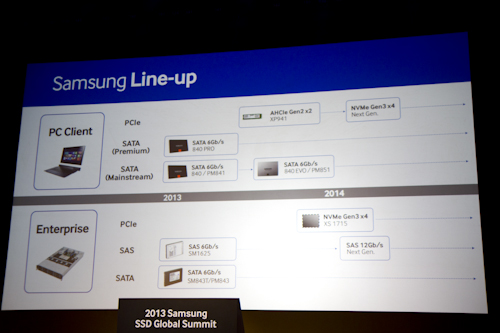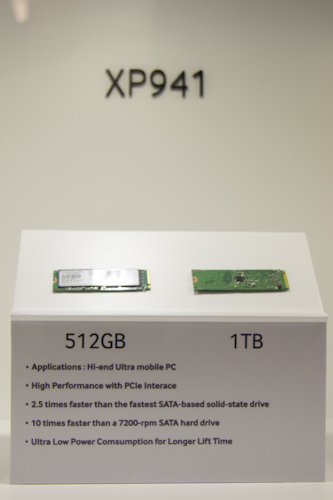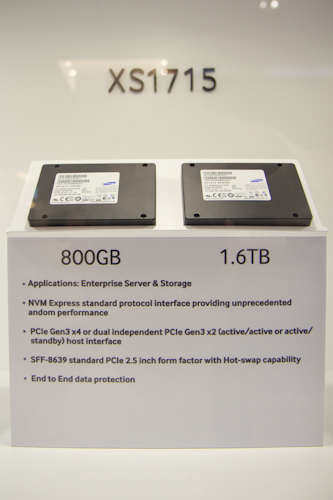Samsung's SSD Global Summit: The Leader In NAND Speaks Up
The theme of this year's Samsung SSD Global Summit, in Seoul, Korea, was SSDs For Everyone. More than 100 journalists from around the world showed up for this one-of-a-kind event, where we got a taste of the future in solid-state storage.
NVMe In The Enterprise: 3 GB/s Sequential Reads?
We've been patiently waiting for the first NVMe-based hardware since the specification was released in early 2011. As you can see from Samsung's roadmap, the wait is almost over.
Earlier this year, Samsung announced its XP941. While this M.2-compliant drive is connected through a two-lane PCI Express link, it still relies on AHCI. It's intended for Ultrabooks and may not be sold in retail channels. At least in the client space, we'll need to wait for the XP941's successor before getting introduced to NVMe.
The news is more promising on the enterprise side. Samsung announced its XS1715, which is NVMe-based.
In fact, the XS1715 is the first 2.5" SSD employing NVMe and an SFF-8639 connector (set to become the de facto for enterprise connectivity). The drive's high-density interface facilitates SATA, dual-port SAS, or third-gen PCIe x4 with accompanying reference clock and sideband signals. This product's specifications are truly amazing. With sequential reads rated at 3 GB/s and random reads in excess of 700,000 IOPS, it'll easily outpace most of today's PCI Express-based add-in cards.
All of that performance in a 2.5" enclosure with reportedly low power consumption should garner a lot of attention from enterprise customers. Unfortunately, Samsung was tight-lipped on availability and pricing.
Get Tom's Hardware's best news and in-depth reviews, straight to your inbox.
Current page: NVMe In The Enterprise: 3 GB/s Sequential Reads?
Prev Page Life Beyond SATA And AHCI Next Page Advancements Beyond NAND-
ojas Well, i have 2.3 TB of writes and 4.36 TB of reads on my 120GB Intel 320 series SSD in the last year...no re-allocated sectors thus far.Reply
My 840 has about 0.41TB written to it, and i bought this drive a few months ago.
Anyway, looking forward to RAPID. -
Someone Somewhere @radiovan I read it as being that it's a replacement for AHCI/IDE - it'll still work with SATA.Reply
Anyone else find that this reads like an infomercial? -
Steveymoo Ahh Samsung, you're still not immune to the age old marketting technique of combining large breasted women with your technology, to catch men's eyes.Reply -
Onus Organizations with huge amounts of data to sift (e.g. Google, NSA, IRS) will want any speed they can get. Labs doing FCAT testing need ridiculous write speeds. For the rest of us, as individuals, if a bloated application like Word already loads in the blink of an eye, any faster simply doesn't matter. I hope a substantial focus can be placed on cost.Reply -
JPNpower CPUs GPUs are sort of slowing. this is the future. This is innovation at its hottest and fastest. Maybe it is competition as some say, as AMD is bogged down in processors, giving the leaders a healthy lead, but in flash, Samsung, Sandisk/Toshiba, and Micron are hot at it.Reply
Everyone wins. -
jabliese radiovan and SomeoneReply
NVMe is a protocol to work with PCIe. This is quite clear from the slides. What is PCIe? Do you remember your last video card upgrade? The slot your card plugged into was most likely a PCIe slot. NVMe has no business with SATA, and that's the way you want it to be. -
drewriley Reply11318974 said:No word on when we might be seeing the new vertical NAND in products?
Last year, Samsung touched on some new technologies that they were working on, but didn't share any insight during their latest summit,


